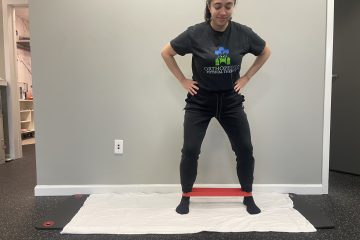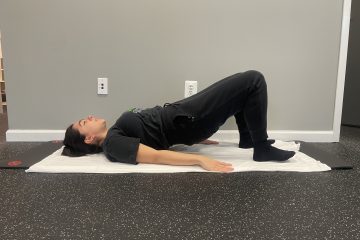Happy C-Section Awareness month!
Let us start off by saying we see and we celebrate our parents who give birth via c-section, and applaud the incredibly hard work of both having and recovering from major abdominal surgery.
C-sections come in many different forms from emergency to elective to parent-assisted c-section (where the birthing parent actually pulls baby the final bit out of their abdomen). Some parents are awake and able to view the surgery through a transparent curtain, some are under anesthesia and wake up with a new life suddenly earthside, and many are somewhere in between.
 According to the World Health Organization (WHO), c-sections currently account for 21% of all births globally, exceeding their recommendation of no more than 10-15% of births. And while there is no doubt that c-sections can be life-saving and medically necessary, c-sections that do not fall under those categories can contribute to detrimental outcomes for both birthing person and baby.
According to the World Health Organization (WHO), c-sections currently account for 21% of all births globally, exceeding their recommendation of no more than 10-15% of births. And while there is no doubt that c-sections can be life-saving and medically necessary, c-sections that do not fall under those categories can contribute to detrimental outcomes for both birthing person and baby.
In the US, 1 out of 3 birthing people will have a c-section, and in some states, the c-section rate is even higher, at over 37%. These numbers have not decreased much over the last 30 years, and in fact, c-section rates have increased over the last 10 years, especially in marginalized communities.
So why are c-section rates increasing?
- Elective c-sections are more in vogue than they have been in the past (not recommended by pelvic health professionals).
- The number of women needing c-sections is increasing.
- Pressure on physicians! Providers are understaffed, underpaid, and overscheduled. In the same way, an in-network general practitioner is 45 minutes late for your appointment and shoos you out after a 5-minute conversation, birth in the hospital setting faces the same pressure where the time physicians have allotted is far lesser than the time needed to care for patients. Additionally, most MDs are not trained in physiologic birth, nor in longer labors, and much of the med tech used for monitoring is faulty, registering low fetal oxygen in many cases where it is, in fact, normal (this is why doulas may suggest refusing monitoring to avoid unnecessary intervention).
Again, we are not discounting the medical necessity of c-sections, and for parents who wanted a vaginal birth and ended up with a c-section they did not desire, to them, we say, you did not fail. You carried and birthed a baby, which is incredible. As pelvic health experts, we are sharing our experience of best practices in accordance with the WHO’s goal to reduce the number of medically unnecessary c-sections.
From a pelvic health perspective, common issues we see post c-sections are…
- Pain with Intercourse
- Symphysis Pubis Dysfunction
- Low back/SI joint pain
- Pelvic Organ Prolapse
- Leakage
- DRA
So if you are pregnant, are there things you can do to try to reduce the likelihood of a c-section?
Yes! Absolutely. There are also many things you can do after a c-section to ensure optimal healing and reduce the likelihood of the aforementioned postpartum pelvic health issues resulting from c-sections.
Before Baby Actions to Help Reduce C-Section Risk:
- Hire a birth doula! They are experts, up-to-date on the latest and greatest research when it comes to all things birth (positions, comfort measures, success rates of various interventions, birth partner support roles, etc.) . Birth doulas support people regardless of their desired birth. You for sure want an epidural in a hospital setting? Great! You want a physiologic homebirth? Awesome! Birth doulas are also invaluable to the birthing partners who are often very overwhelmed trying to support the birthing parent, and who are also likely to forget most of what they learned in their birth course when they see their partner in discomfort.
- Work with a certified nurse midwife (CNM), if you can. Their outcomes of vaginal birth are far higher than those of MDs.
- Go to Pelvic Health Physical Therapy (that’s us)! We teach patients how to push, what laboring positions can help baby descend in the pelvis, and after 34 weeks, we can manually stretch the pelvic floor, vaginal canal, and perineal area.
After a C-Section, work with a Pelvic Health PT to…
- Desensitize and mobilize the scar tissue! This is so key. A wound care sheet making sure it doesn’t get infected ain’t gonna cut it.
- Retrain and strengthen the abdominals. Many c-section parents report weakness and a lack of mental connection to/ability to engage their abdominals, so pelvic health PT works to get back abdominal function and reduce low back pain due to weak abdominals.
- Mobilize the hips, low back, and pelvic floor which can be tight and cause discomfort.
- Work on functional training to reduce stress on the low back/pelvis and make it easier to play with kids, do daily tasks, and be engaged in activities without pain.
Remember that a c-section is MAJOR abdominal surgery! You get a referral for PT with basically any other surgery to a major muscle group, so why should this be any different?!
If you are a c-section mom, whether you had your babe 2 weeks or 20 years ago, book a FREE 10-minute consult call today. We know we can help you ✨
Be empowered in education,
OrthoPelvic Physical Therapy


